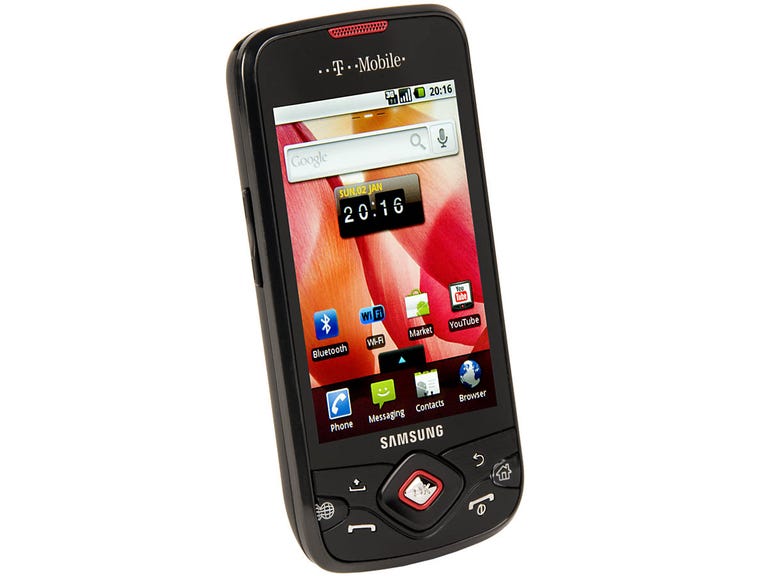 Why You Can Trust CNET
Why You Can Trust CNET Samsung Galaxy Portal review: Samsung Galaxy Portal
The Galaxy Portal doesn't rock the latest version of the Android operating system or support multi-touch gestures, but this smart phone isn't without its charms. It's relatively cheap, for one thing, and it offers a responsive capacitive touchscreen, good connectivity and speedy performance
Hot on the heels of Samsung's first Android phone, the Galaxy, comes the company's latest offering, the Galaxy Portal. The Portal is essentially a cut-down version of the Galaxy with less memory and a TFT, rather than AMOLED, screen. This is reflected in the price, though. The Portal can be picked up from T-Mobile for free on a relatively inexpensive, £20-per-month contract. You can also buy it for around £300 SIM-free.
The Good
The Bad
The Bottom Line
Chip off the old block
The Portal isn't exactly the best-looking smart phone we've ever clapped eyes on. Everything about this phone's design screams function rather than fashion. It's not overly large, measuring 57 by 115 by 13mm, but it actually looks bigger than it really is, due to its rather blocky and boring lines.
The button arrangement at the bottom of the screen also looks exceptionally ugly. The diamond-shaped five-way controller is slightly too large and there are just too many buttons grouped together in a small space. The Portal is a long way from the sleek simplicity of the HTC Legend, for example.
The screen, on the other hand, is very impressive for a handset in this price range. The Portal uses a TFT screen, rather than the AMOLED display used by the Galaxy. The screen still looks very bright, however. Colours are beautifully vivid and the 320x480-pixel resolution means you don't have to do an excessive amount of zooming when using Android's impressive Web browser.
Perhaps surprisingly, Samsung has used a faster processor in this handset than in the more expensive Galaxy -- an 800MHz, rather than 528MHz, chip. The difference is certainly noticeable, as the Portal feels very nippy when moving through menus or loading apps. The Portal has much less internal memory, though -- 180MB, compared to the Galaxy's 8GB. To be fair, though, you do get a 1GB microSD card in the box, and extra microSD cards aren't exactly expensive these days.
Geriatric Android
Unfortunately, although we're getting used to seeing the newer versions of Android appearing on handsets like the Legend and Motorola Milestone, Samsung has instead stuck with the older and less feature-rich version 1.5 on the Portal. What's more, it hasn't added any enhancements over the top of the Android user interface, so you're limited to three home screens and don't get any of the fancy interactive backgrounds that some of the newer handsets have. Also, despite the fact that the Portal uses a capacitive screen, there's no support for multi-touch gestures.
On the rear of the phone, you'll find the relatively basic, 3.2-megapixel camera. The camera is rather sluggish, as the autofocus takes an age to do its stuff. The results are slightly below par too. Even shots taken outside in good light tend to look rather noisy and, as there's no flash, the camera's pretty hopeless when working indoors.
The Portal isn't lacking on the connectivity front, though, with HSDPA, Wi-Fi, Bluetooth and GPS support. Call quality is also pretty good, as the earpiece is pretty beefy, so you don't have to strain to hear callers even in quite noisy environments, like busy streets. Battery life is pretty much par for the smart-phone course -- we got between 1.5 and 2 days out of the Portal before it needed recharging.
Conclusion
It's difficult to understand why Samsung has stuck with Android 1.5 on the Galaxy Portal. It's rather like pushing a boxer into the ring with one arm tied behind his back. It's a shame as, despite the phone's rather utilitarian looks, the Portal is a very capable budget Android handset with a speedy processor and impressive screen.
Edited by Charles Kloet
